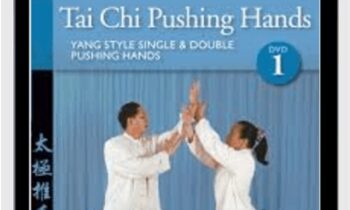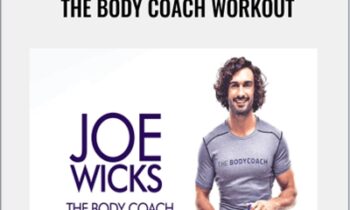$214.95 Original price was: $214.95.$53.00Current price is: $53.00.
Digital Download: You will receive a download link via your order email after successful payment.
Format: [ 26 AVI ] | 1.628 GB
 Purchase this course you will earn 53 Points worth of $5.30
Purchase this course you will earn 53 Points worth of $5.30Elevate your skills with the TTC VIDEO – Human Body – How We Fail, How We Heal ( Compressed ) course, available for just $214.95 Original price was: $214.95.$53.00Current price is: $53.00. on Utralist.com! Browse our curated selection of over 60,000 downloadable digital courses across diverse Health and Medical. Benefit from expert-led, self-paced instruction and save over 80%. Start learning smarter today!
Your body is a fortress under constant assault. Infectious diseases, parasites, environmental toxins, physical trauma, allergens, and natural disasters are some external enemies it faces. From the inside, it is threatened by occasional overzealous allergic, immune, and inflammatory responses, as well as by the cellular mutations that produce cancer.
Fortunately, the body’s defenses are remarkably successful, and most of the time we are unaware of the intense drama taking place within our cells and organs.
The intriguing details of this drama make up the field of pathophysiology—the study of the disruptions in a normal body’s functions that are caused by disease or injury. Medical students get an exhaustive introduction to this subject early in their training, and the best clinicians are masters of it. Yet few laypeople understand the story of how our bodies fail and the marvelous ways they heal themselves.
The Human Body: How We Fail, How We Heal is designed to fill this information gap. In 24 half-hour lectures, you will explore the many ways the body meets the challenges of disease and injury with remarkable defenses and restorative powers, and how, in some cases, it may either fail or overreact.
A Doctor Who Can Tell You What’s Wrong and Why
Your guide is Dr. Anthony A. Goodman, surgeon, professor, novelist, and a superb communicator of medical information. Many Teaching Company customers have already experienced his reassuring bedside manner in his other course, Understanding the Human Body: An Introduction to Anatomy and Physiology. That series covered the normal functioning of the body’s organ systems, with glimpses at the more common clinical problems.
Now, Dr. Goodman presents a systematic survey of what can go wrong, why, and how the body itself responds, as well as what doctors can do to intervene. There is no better demonstration of the wondrous intricacy of the body and the everyday miracle of good health.
Hundreds of Medical Examples
In these lectures, Dr. Goodman brings up many subjects you may have wondered about, while also taking you down fascinating paths that will be completely new to you. Among the hundreds of examples he discusses are:
- Grapefruit and medicine: Cells react to many medications as if they were toxins, which is why the medicines work for a short time before being excreted. Some chemicals in grapefruit interfere with this “toxin-recognition” function in some cells, keeping the medicine in the system longer than usual—a dose that may have been normal could become too much.
- The eyelid: If you go to an ophthalmologist for a condition such as conjunctivitis, a corneal abrasion, or an infection, the doctor will have you close your eye and then cover the eyelid with a piece of gauze and adhesive tape to keep it closed. The inside of the eyelid is the world’s best dressing. It has never been surpassed.
- Human bite: The flora of the human mouth is extremely toxic anywhere but in the mouth. Therefore, the human bite is one of the most dangerous. The “boxer’s fracture”—a broken hand from a blow to the opponent’s teeth—must be treated very aggressively if it is contaminated with bacteria from the mouth—even more aggressively than a dog or cat bite.
- Appendicitis: An initial pain near the site of the appendix is more likely to be a kidney stone than appendicitis, which usually begins as pain around the navel due to the way nerves interpret swelling in the intestines. Dr. Goodman describes the distinctive migration of pain as the appendix becomes obstructed, enlarged, and then infected.
- Colon cancer: The tumors that cause most colon cancers are unusual because they develop from benign to malignant in a predictable sequence. Early intervention can remove the precancerous growths, called polyps. “We practically wipe out colon cancers in that population willing to be colonoscoped about every five to ten years or so,” observes Dr. Goodman.
Become Familiar with Terms Doctors Use
One of the valuable features of this course is the exposure you will have to medical terminology. Dr. Goodman is generous in his use of technical terms and equally generous in the care he takes to explain them. You will learn the difference between signs and symptoms; when a disease is acute versus chronic; how to distinguish endemic, epidemic, and pandemic; and why the malapropism elephantitis means “inflammation of your elephant,” when elephantiasis is the correct term (meaning “appearing like an elephant”).
Reminding viewers that medical students are exposed to thousands of new words in their first two years, Dr. Goodman emphasizes that physicians have to understand each other as well as the biology of the body, and that is why a precise, familiar vocabulary is so important. “We’ll try to keep these terms in play all the time, and I think you’ll find them just a part of your vocabulary as we move along,” he says reassuringly.
It’s just one of the many ways that Dr. Goodman treats you with collegial respect when introducing you to the body’s astonishing, yet natural, mechanisms of healing and self-defense when it faces the assaults and accidents of daily life.
What You Will Learn
Cellular level: After an introductory lecture describing the scope of the course, you begin at the cellular level, exploring the function of cells and the several common forms of injury. This lays the foundation for all that follows.
Inflammation and the immune system: The inflammatory response is the body’s most primitive and immediate reaction to most forms of attack. The immune response is slower acting but more highly evolved, and it is tailor-made to each threat, for which it develops a distinct memory.
Infectious diseases: Infectious diseases are humankind’s most persistent and deadly perils. They have a wide range of causes, including molecular prions, viruses, bacteria, parasites, and worms. These lectures focus on their prevention and treatment.
Shock: When the body perceives a dire threat it begins an automatic, progressive shutdown of systems in an effort to protect the brain and heart. This ultimately life-saving response is called shock, and yet it can quickly lead to death unless corrective measures are taken.
Cancer: Cancer is a self-inflicted wound caused when the genetic machinery of a cell goes awry. Theses lectures explore the environmental causes of cancer, the specific steps in its molecular biology, and strategies for treating its different forms.
Wound healing: The complex and astounding processes of bodily healing and repair are well illustrated by wound healing—in infections, trauma, and surgical intervention. You may be surprised to learn that no wound has to be closed, and that it is often a bad idea to attempt to close a wound that might be contaminated.
Dr. Goodman’s goal is to give you the tools to understand diseases and injuries and the body’s reaction to them. Such knowledge is no substitute for seeing your physician; however, now you will be better able to communicate with your doctor, know what questions to ask, and have more clarity regarding your own illness or that of a loved one.
Get Download TTC VIDEO – Human Body – How We Fail, How We Heal ( Compressed ) at Forimc.com today!
Delivery Method
– After your purchase, you’ll see a View your orders link which goes to the Downloads page. Here, you can download all the files associated with your order.
– Downloads are available once your payment is confirmed, we’ll also send you a download notification email separate from any transaction notification emails you receive from esygb.com.
– Since it is a digital copy, our suggestion is to download and save it to your hard drive. In case the link is broken for any reason, please contact us and we will resend the new download link.
– If you cannot find the download link, please don’t worry about that. We will update and notify you as soon as possible at 8:00 AM – 8:00 PM (UTC+8).
Thank You For Shopping With Us!
Be the first to review “TTC VIDEO – Human Body – How We Fail, How We Heal ( Compressed )” Cancel reply
Cultivate continuous growth with the TTC VIDEO – Human Body – How We Fail, How We Heal ( Compressed ) course at Utralist.com! Unlock lifetime access to premium digital content, meticulously designed for both career advancement and personal enrichment.
- Lifetime Access: Enjoy limitless access to your purchased courses.
- Exceptional Value: Benefit from savings up to 80% on high-quality courses.
- Secure Transactions: Your payments are always safe and protected.
- Practical Application: Gain real-world skills applicable to your goals.
- Instant Accessibility: Begin your learning journey immediately after buying.
- Device Compatible: Access your courses seamlessly on any device.
Transform your potential with Utralist.com!
Related products
Health and Medical
= 28 Points
Health and Medical
= 74 Points
Health and Medical
CDT Dental Coding and Reimbursement Update: Identifying Common Practice Mistakes – Paul Bornstein
= 85 Points
Health and Medical
= 72 Points
Health and Medical
The Heart of Complex Cardiac Care: Strategies for Rapid Action – Marcia Gamaly, Robin Gilbert
= 85 Points
Health and Medical
= 28 Points
Health and Medical
= 29 Points
Health and Medical
= 28 Points








5 reviews for TTC VIDEO – Human Body – How We Fail, How We Heal ( Compressed )
There are no reviews yet.